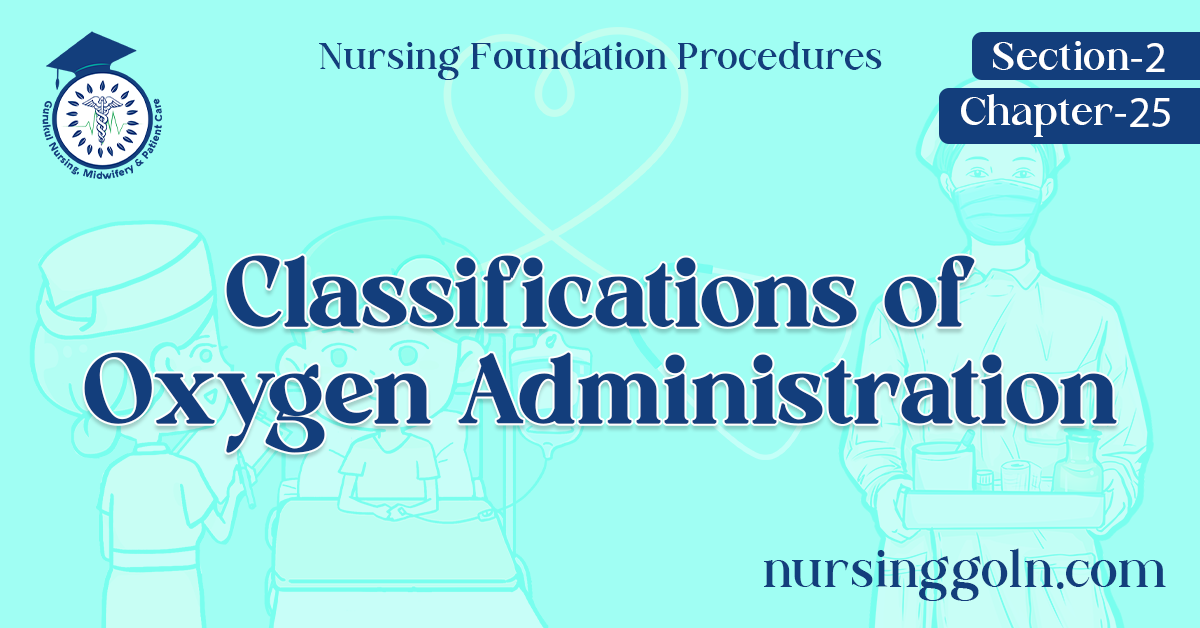Today our topic of discussion is Classifications of Oxygen Administration.
Classifications of Oxygen Administration

CLASSIFICATIONS
Oxygen is administered by either low flow or high flow systems. Low flow administration devices include nasal cannula, oxygen mask, oxygen tent, etc. High flow administration devices include venturi mask some devices. can be used for both low and high flow administration, e.g. oxygen hood incubator, etc.
Nasal Cannula
It is the most important low flow device used to administer oxygen of a rubber or plastic tube that extends around the face with 6-1. Curved prongs that fit into the nostrils. One side of the tube connects to oxygen tubing and oxygen supply. The cannula is often held in place by an elastic band that fits around the clients head or under the chin.
The nasal cannula is easy to apply and does not interfere with client’s ability to eat or talk. It is very comfortable and permits some freedom of movement. Oxygen is delivered via the cannula with a flow rate of up to 4 L/min. Higher flow rates dry air mucous and do not further increases inspired oxygen concentrations .

Equipment
- Oxygen supply with a flow meter
- Humidifier with sterile distilled water
- Nasal cannula and tubing
- Tape if needed to secure the cannula in place
- Gauze to pad the tubing over the cheek.
Procedure
- Determine the need for oxygen therapy and the physicians order
- Assist the client to a semi-Fowler’s position as possible.
- It permits easier chest expansion easier breathing .
- Explain about the procedure and inform the client and support persons about safety precautions connected with oxygen use.
- Set-up the oxygen equipment and humidified
- Turn on the oxygen at the prescribed rate and ensure proper functioning
- Put the cannula over the clients face
- If the cannula will not stay in place tape if at sides of face
- Slip gauze pads under the tubing over the check bones to prevent skin irritation as necessary.
- Assess the client regularly.
- Assess the vital sings, color, breathing pattern and chest movement.
- Check the equipment are working regularly Make sure that safety precautions are being followed.
- Record initiation of therapy and all nursing assessments.

Nasal Catheter
Nasal catheters are used infrequently, but they are not absolute. The procedure involves inserting an oxygen catheter into the nose to the nasopharynx. Because securing the catheter must be changed at least every 8 hours and inserted into the other nostril, for this reason, the nasal catheter is a less described method because the client may have pain when the catheter is passed into nasopharynx and because trauma can occur to the nasal mucosa. The nasal catheter permits free movements for the patent and nursing care may be given with much more ease .
Read more:
